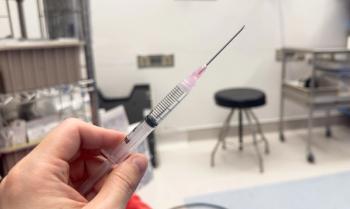
Pharmacists Should Use Data Systems to Achieve Immunization Goals
Pharmacists immunize populations unlikely to otherwise receive vaccines. However, incompatible data systems obscure evidence of vaccination receipt and increase the risk of repetitive vaccination.
Pharmacists immunize populations unlikely to otherwise receive vaccines. However, incompatible data systems obscure evidence of vaccination receipt and increase the risk of repetitive vaccination.
Statewide immunization information systems (IIS) attempt to increase vaccination information sharing in each state, but pharmacists do not always submit vaccine information. Interstate communication is another barrier.
Almost every American visits a retail establishment with a pharmacy in any given week. Yet, healthy adults rarely visit their medical providers, and compared with pharmacy-based vaccination, scheduling a vaccination visit at a physician’s office is often difficult.
The Online Journal of Public Health Informatics has published a study that describes examples of pharmacy-public health collaboration through electronic data exchanges. The authors compared the public health information technology employed by a small drugstore chain, a national chain, and a project targeting adults and adolescents.
Bartell Drugs, a 65-location chain in Washington State, examined IIS’s effect on workflow and its value on increasing point of care vaccinations. Only 35% to 40% of Washington State pharmacists used the state’s IIS in 2014, even though many have been administering vaccines for years. Chickenpox and MMR vaccines were most often missing, while the most administered vaccines were meningococcal, pneumococcal, hepatitis A, and Tdap.
At Bartell Drugs, which pharmacist was on duty affected the likelihood that patients would receive vaccines heavily. Many of the chain’s pharmacists did not recommend needed vaccines; the researchers believed that streamlining the process by merging data input into the chain’s computer system and IIS would help.
The national chain implemented data exchange between every state’s IIS and its own computer system. Pharmacists found 3 in 4 pharmacy patients on an IIS, and 91% of these patients needed at least one vaccine according to the IIS. However, the number of recorded vaccines dropped precipitously in adults (4 to 5 recorded lifetime vaccines), compared with dozens of vaccine recorded for children and adolescents.
A partnership among a state pharmacy association, a number of retail pharmacies, and state public health departments attempted to determine technological means of increasing vaccination rates. Eight pharmacies administered nearly 1000 influenza vaccinations and 300 additional vaccinations over a 6-week period. Pharmacists determined vaccination need with the IIS (78% of patients) or age-appropriate, guideline-driven recommendations.
The leading reason for pneumococcal conjugate vaccine refusal (30% of patients) was belief in past vaccine receipt. This was because of either an omission in the IIS or the patient’s mistaken belief (confusion with the polysaccharide vaccine and nonpneumococcal vaccines).
A complete, easy-to-access vaccine record is needed to accomplish optimal vaccine coverage and dispel patient confusion about their vaccination history. Shared electronic databases are increasingly necessary as patients obtain their vaccines from nonmedical providers more and more every year.
Providers must update the state systems with complete vaccine records to best meet public health goals.
Newsletter
Stay informed on drug updates, treatment guidelines, and pharmacy practice trends—subscribe to Pharmacy Times for weekly clinical insights.


















































































































































































































